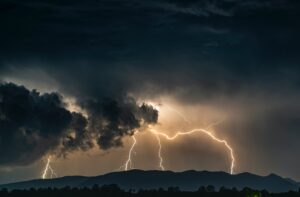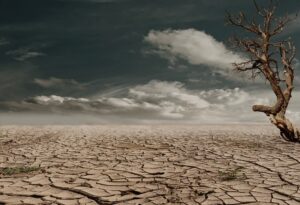Why The Bad Weather Happens
When the weather conditions are rough in a region, or the weather shows a significant difference from the typical weather, then these weather conditions can be termed “BAD WEATHER”. Bad or harsh weather conditions often last for a small period of time. Generally, it takes two or three days to return to normal.
Let us learn more about the causes and impacts of harsh weather.
WHAT ARE THE LEADING CAUSES OF THIS BAD WEATHER?
According to climatic studies, the primary reason behind this BAD WEATHER is different human activities. Burning fossil fuels in different ways has become the most common reason for sudden weather changes. Fossil fuels are burned to produce energy. The potential causes of burning fossil fuels are for making heat, transportation, and electricity.
This process gives out carbon dioxide. This further leads to global warming and thus impacts the weather. The massive increase in the greenhouse gases like carbon dioxide has led to increases in global temperature. To cut it short, the significant reasons behind this bad weather are listed below:
CHANGE IN ATMOSPHERIC WINDS
Jet streams impact the weather pattern across the globe. So, what are actually jet streams? Jet streams are the winds that are found in the upper atmospheric levels. These narrow, strong bands of wind blow from west to east. It also changes its direction to the north-south often. Basically, these narrow wind bands follow the hot-cold air boundaries.
FREQUENT TEMPERATURE CHANGES
Significant weather alteration leads to major weather changes. Due to the increase in greenhouse gases like carbon dioxide and methane, the global temperature is increasing at a higher rate. This increase in temperature further gives rise to a low-pressure atmosphere. This is the primary cause of thunderstorms, hurricanes, and other common tropical storms.
CLIMATIC CHANGES

In the past few decades, the world temperature has increased a lot. Moreover, the temperature keeps on changing with every passing year. With the increase in gases like carbon dioxide, the earth’s temperature is increasing simultaneously. The greenhouse gases trap heat in the air, which develops relatively warm conditions leading to weather changes.
All these events lead to changes in climatic conditions. Climatologists say that climate changes have a significant role in causing bad weather.
IMPACT OF BAD WEATHER
Bad weather leads to a series of climatic events. The most common occurrences are listed below:
HURRICANES
With the increase in global temperature, hurricanes are getting stronger. This is because the storm system draws its energy from hot ocean water.
The rise in sea surface temperatures in the area where Atlantic hurricanes originate and travel through are partly to blame for the recent upsurge in activity.
Various factors influence the sea surface atmosphere or temperatures, such as natural variation, heat-trapping gas emissions caused by humans, and particle pollution.
The development of HURRICANE winds also depends on how the regional atmosphere reacts to changes in the regional sea surface atmosphere. This atmospheric response is highly dependent on the change’s origin.
HEAT WAVES
The abnormally hot weather lasting for days and weeks is referred to as heat waves. The occurrence of bad weather has been witnessed more recently as the number of heat waves.
Starting from 2011, it was when the heat wave increased up to 3 times its long-term average. Texas in 2011 and Midwest in 2012 witnessed significant heat waves and drought cases, respectively. According to several studies, the climate-induced by human beings is the ultimate reason for such an increase in the heatwaves.
THUNDERSTORM

Since the 1950s, the frequency and intensity of winter storms have grown. Also, their paths have shifted over the United States, heading north.
Even if it seems contradictory, CLIMATE CHANGE may be a factor in the more harsh winter weather. When the temperatures drop, more snow will fall because of the water vapor that has been trapped in the warmer atmosphere as the year goes on. Other severe storm trends, such as the frequency and strength of tornadoes, violent THUNDERSTORM winds, and hail, are unknown and the subject of extensive research.
Another cause, which some scientists think is causing the polar vortex to be disturbed and the jet stream to be weaker, is the fast-warming Arctic. These thunderstorms also result in financial losses.
WILDFIRES
The majority of fires are started by human activity, such as tossing lighted cigarettes and lighting campfires, although hotter weather results in drier forests and more prone to burning.
The western United States has always experienced wildfires as a natural occurrence. But as this area grows drier and warmer, the wildfires are getting bigger, more violent, and moving faster. California has recently become the epicenter of weather turmoil.
Seasonal high winds contributed to the destructive wildfires’ exceptional growth and spread because of the state’s record-breaking dry and hot weather conditions. These wildfires caused thousands to flee, killed people, and destroyed businesses and homes.
DROUGHT

Owing to bad weather, the temperature of a region sometimes gets affected. As a result, due to extremely high temperatures in some areas, the rate of evaporation increases resulting in loss of water through the leaves of the plants. Hence it leads to the drying of soils at a rapid pace. In drier regions, the rays from the sun reach the dry ground and evaporate the minor moisture present. Such extreme action causes the lands to crack and lose their fertility turning into barren land.
The consequences of bad weather are largely visible as Oklahoma and Texas experienced drought conditions for over 100 days. In fact, both states have a history of recording the hottest summers since the year 1895. As the rate of evaporation doubled its long-time average, frequent occurrence of drought led to the extinction of water resources.
It resulted in a considerable loss of 10 billion dollars only in agriculture.
HEAVY DOWNPOURS
Over the last 3 to 5 decades, the chances of heavy downpours have been increasing at an alarming rate. Nowadays, events of heavy rainfall have been quite frequent as well as the amount of precipitation on rainy days has also increased. Regions like the Midwest, northwest, and the tremendous upper plains experience the highest rainfall. As a result, the chance of floods has also increased.
CONCLUSION
The significant weather changes are laying a major impact on climatic change. Bad weather is becoming the new normal across the globe. BAD WEATHER conditions like hurricanes, wildfires, heatwaves, drought, floods, and thunderstorms were rare occurrences, but now these are increasing at a high rate.
